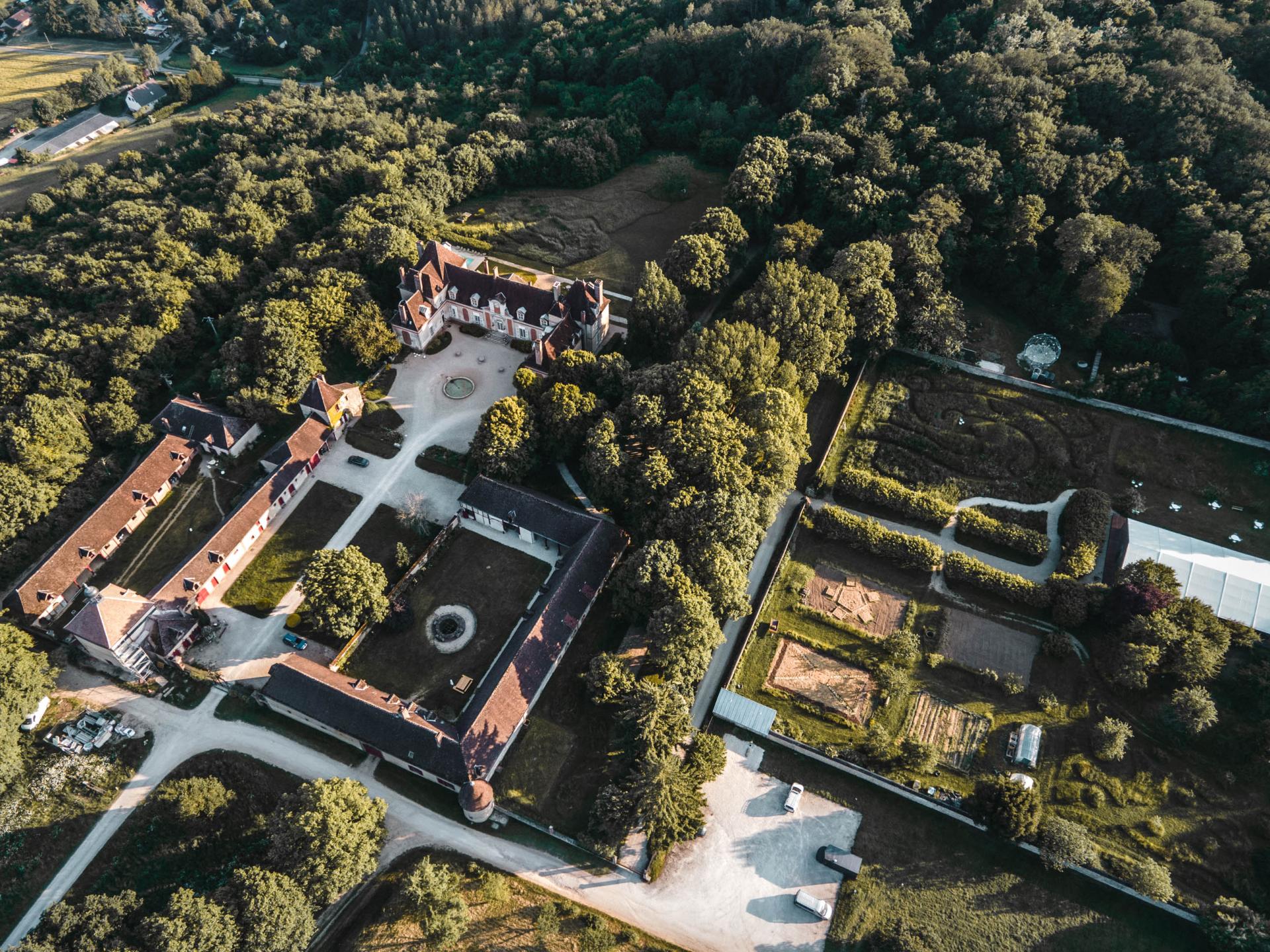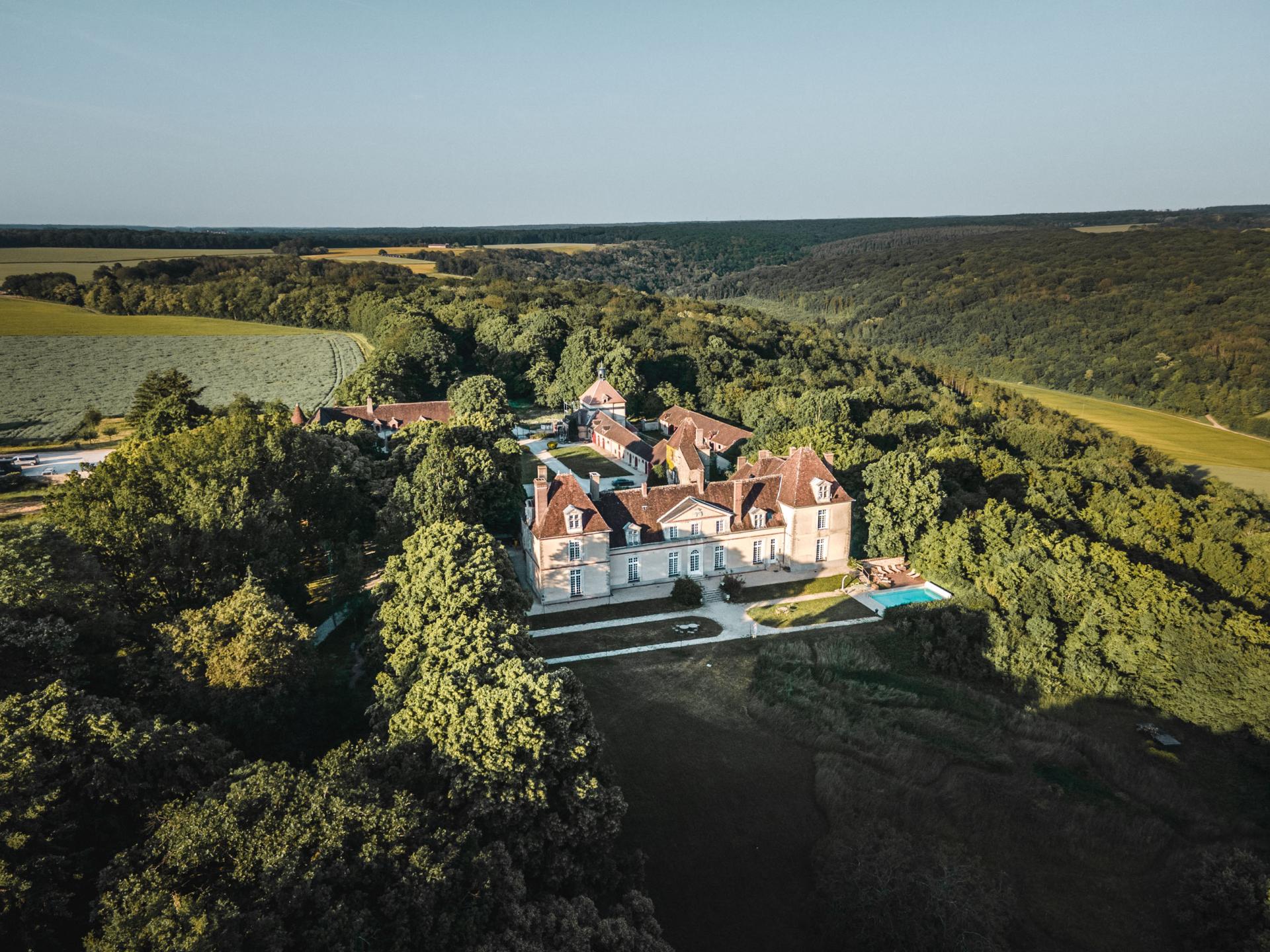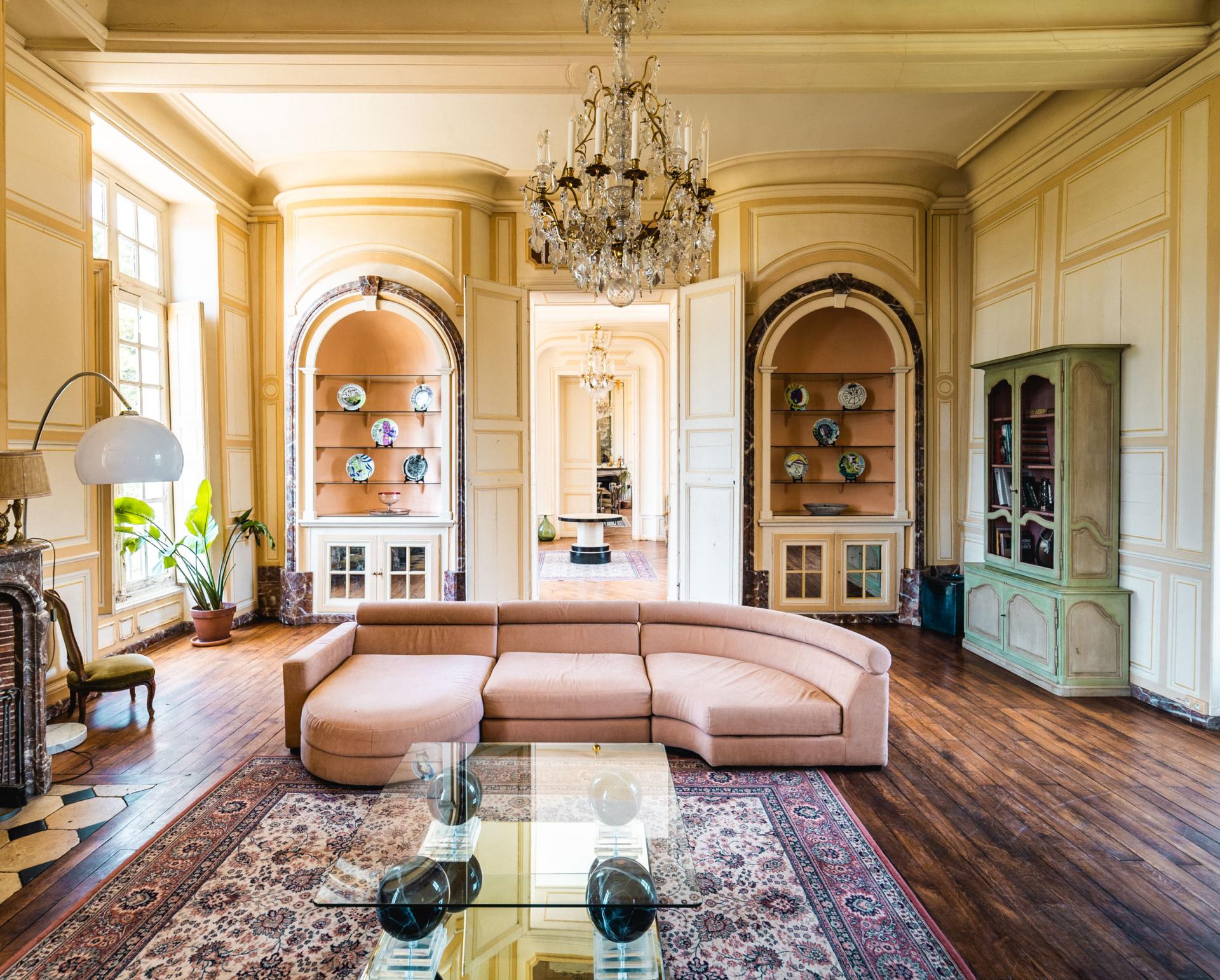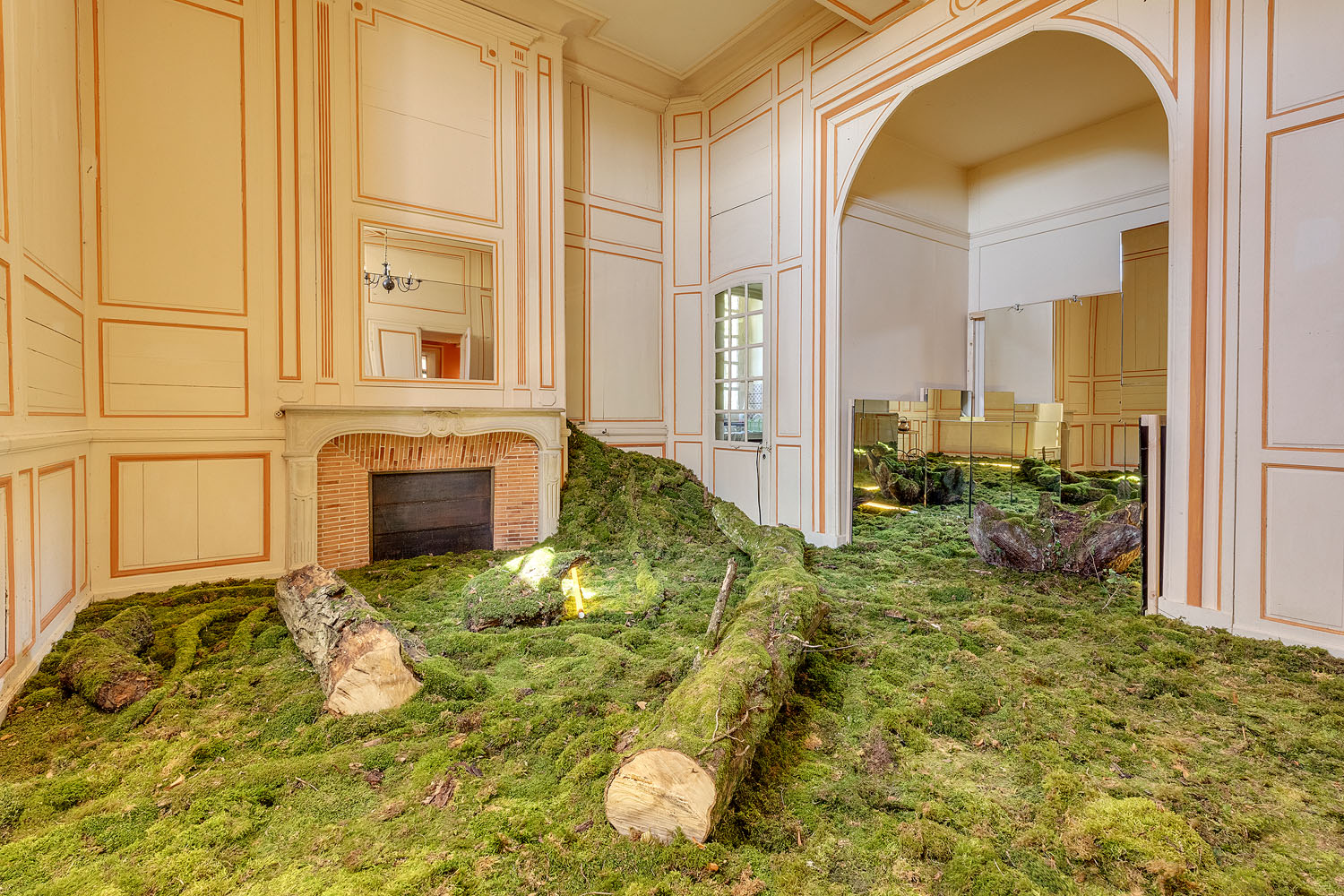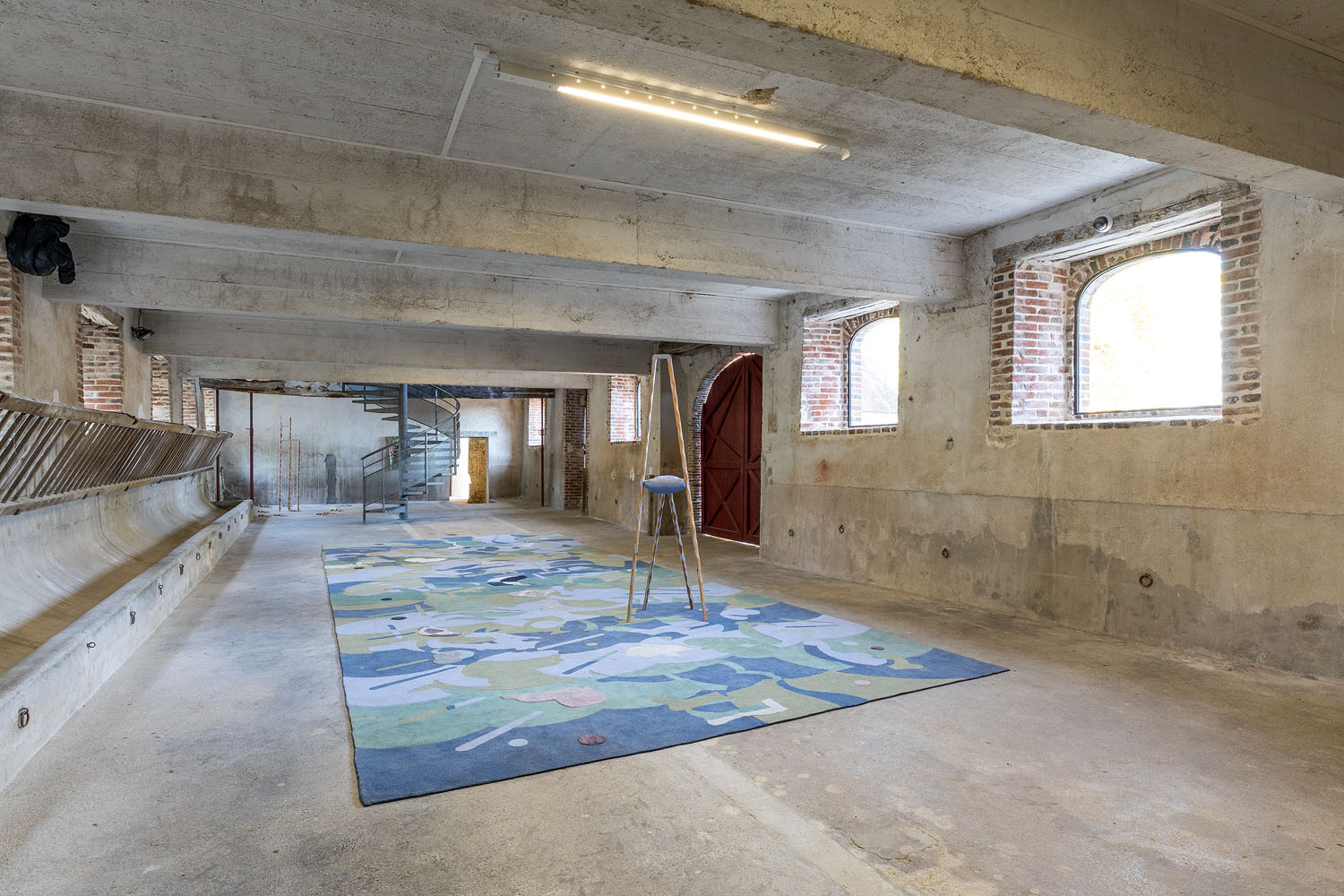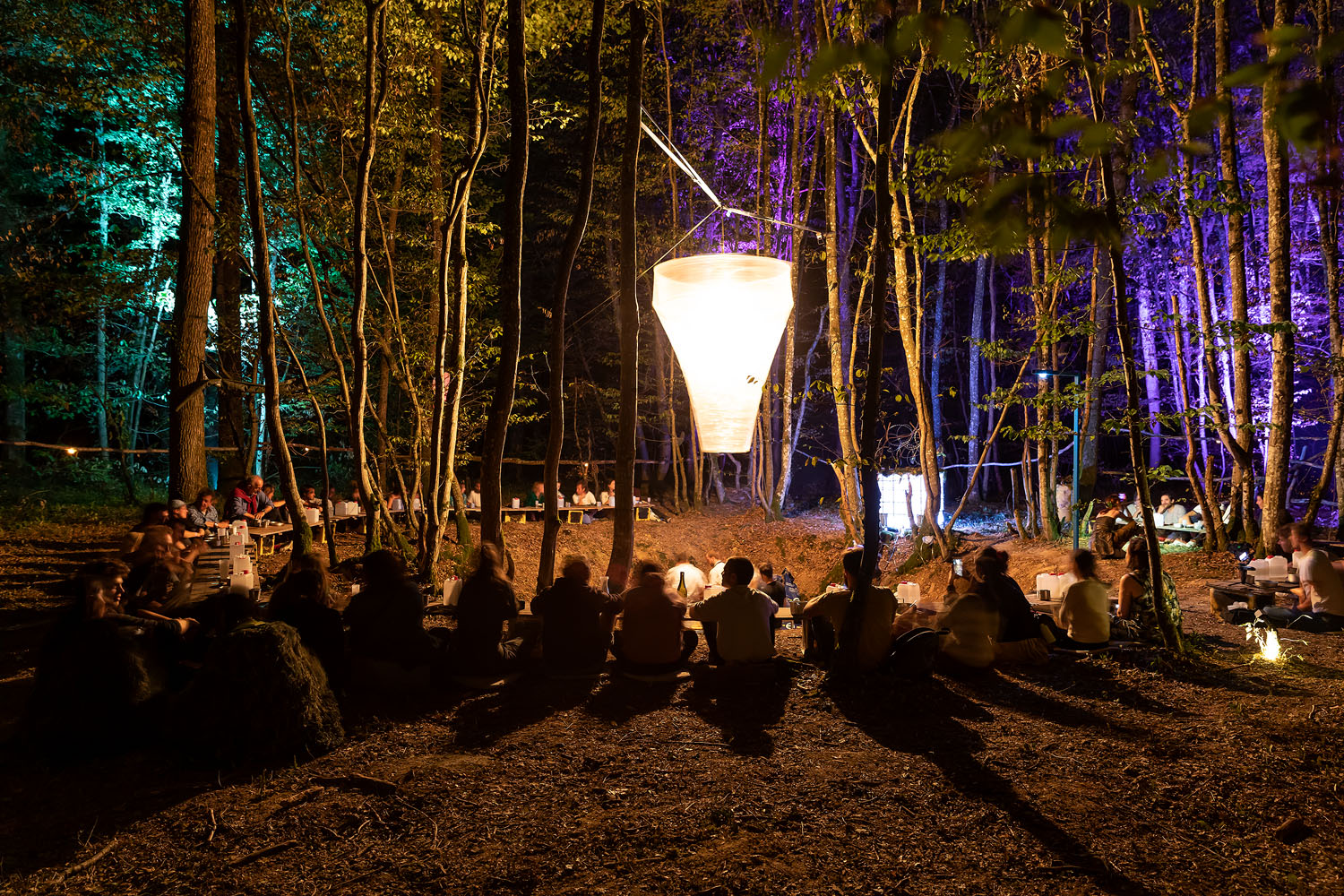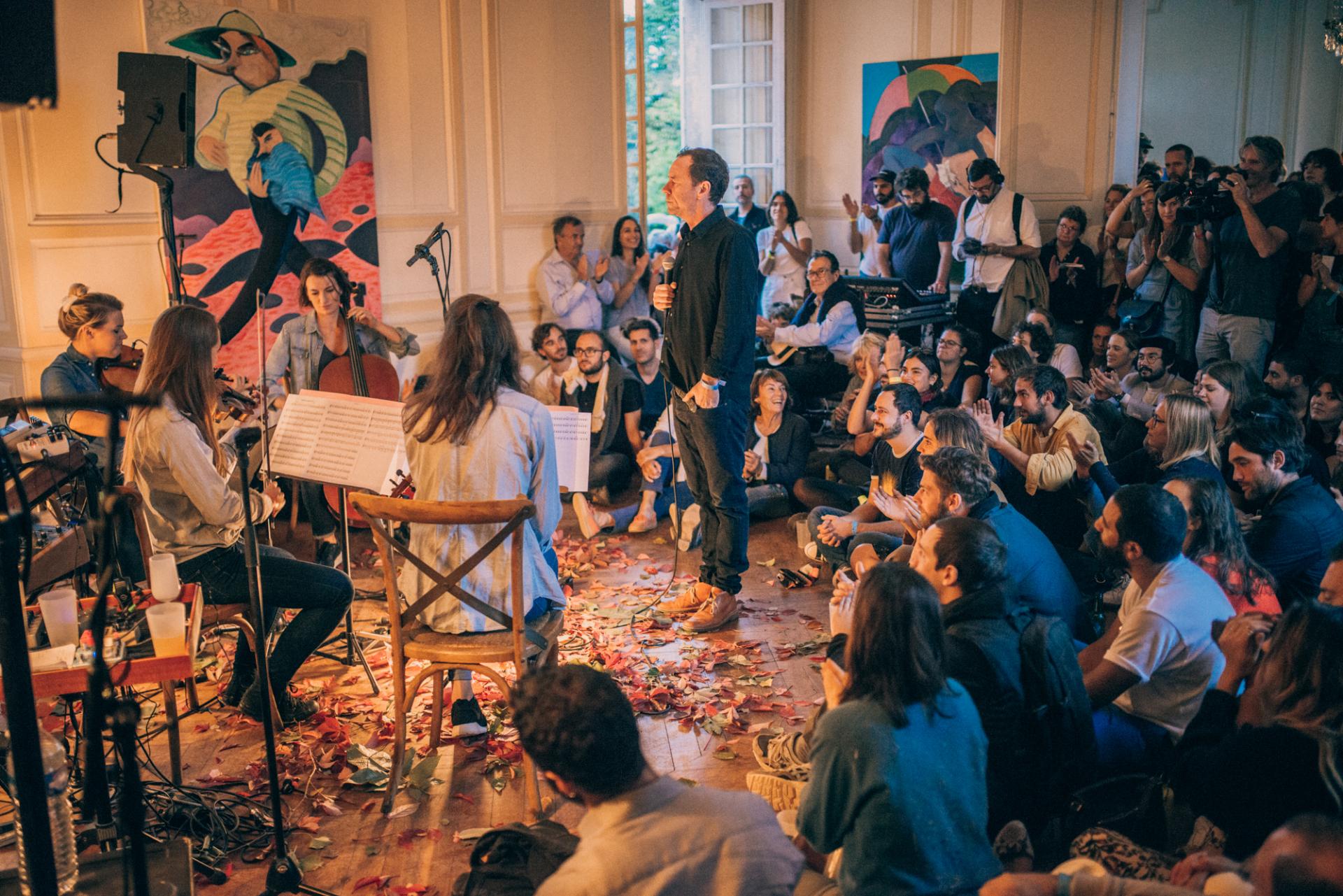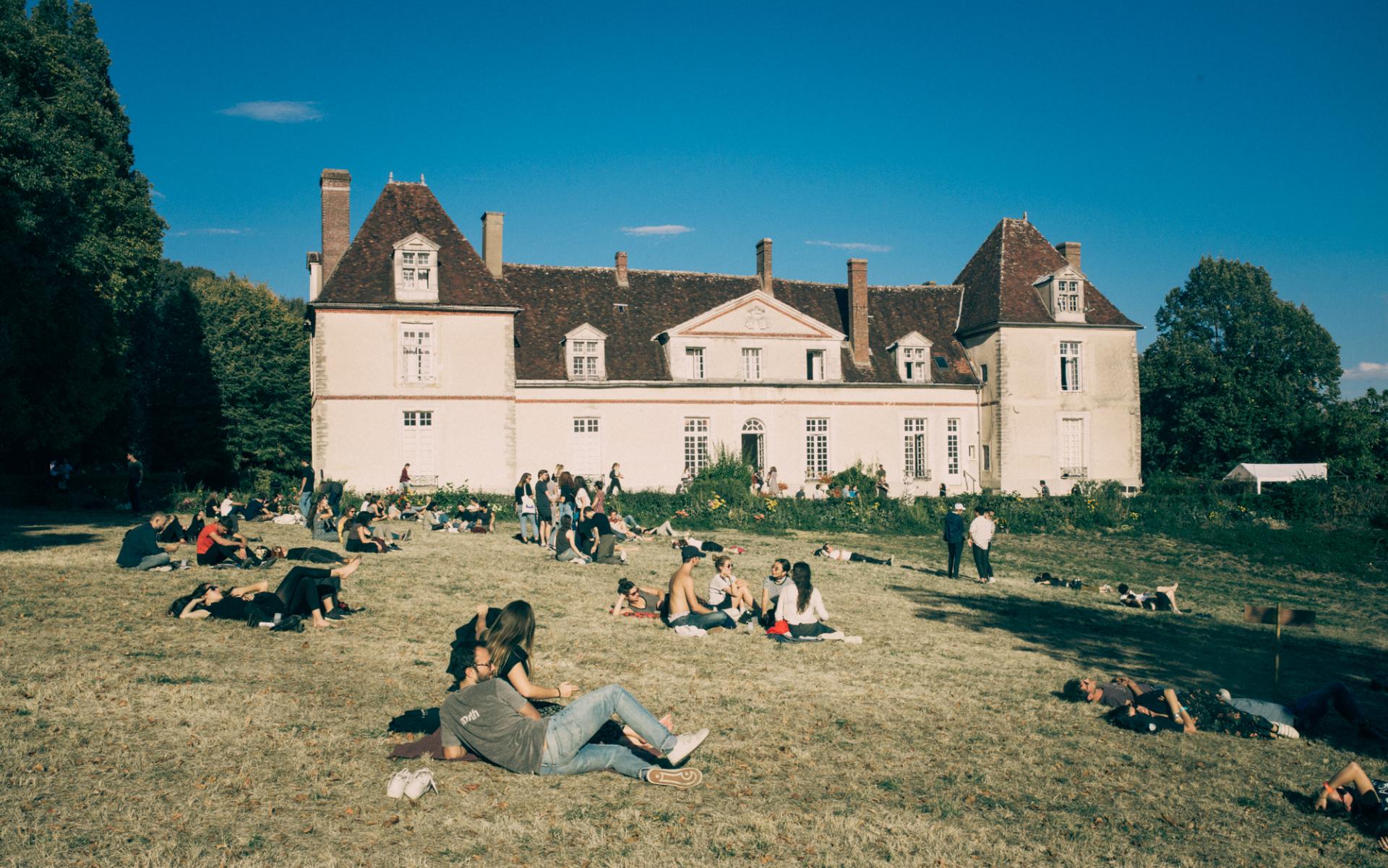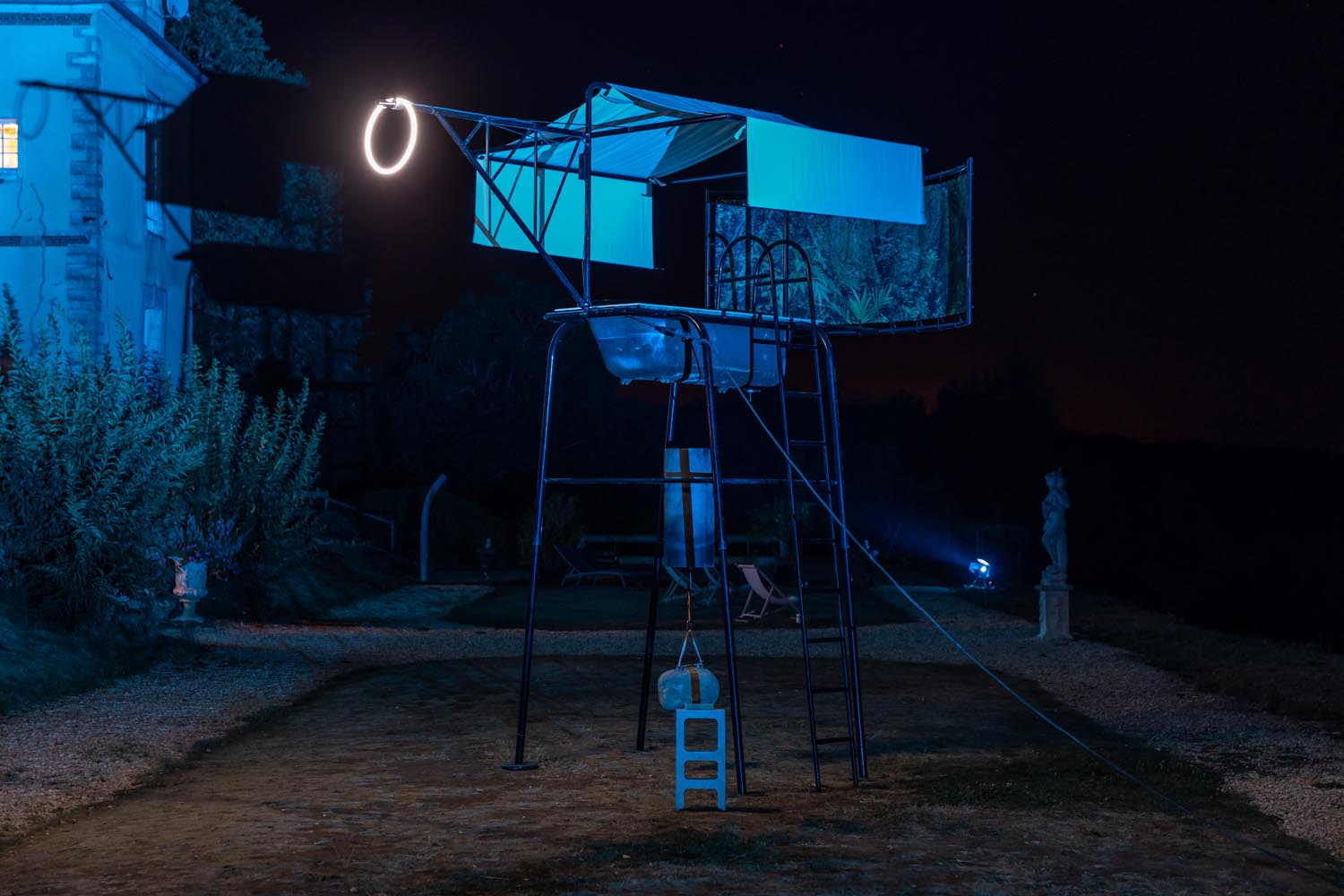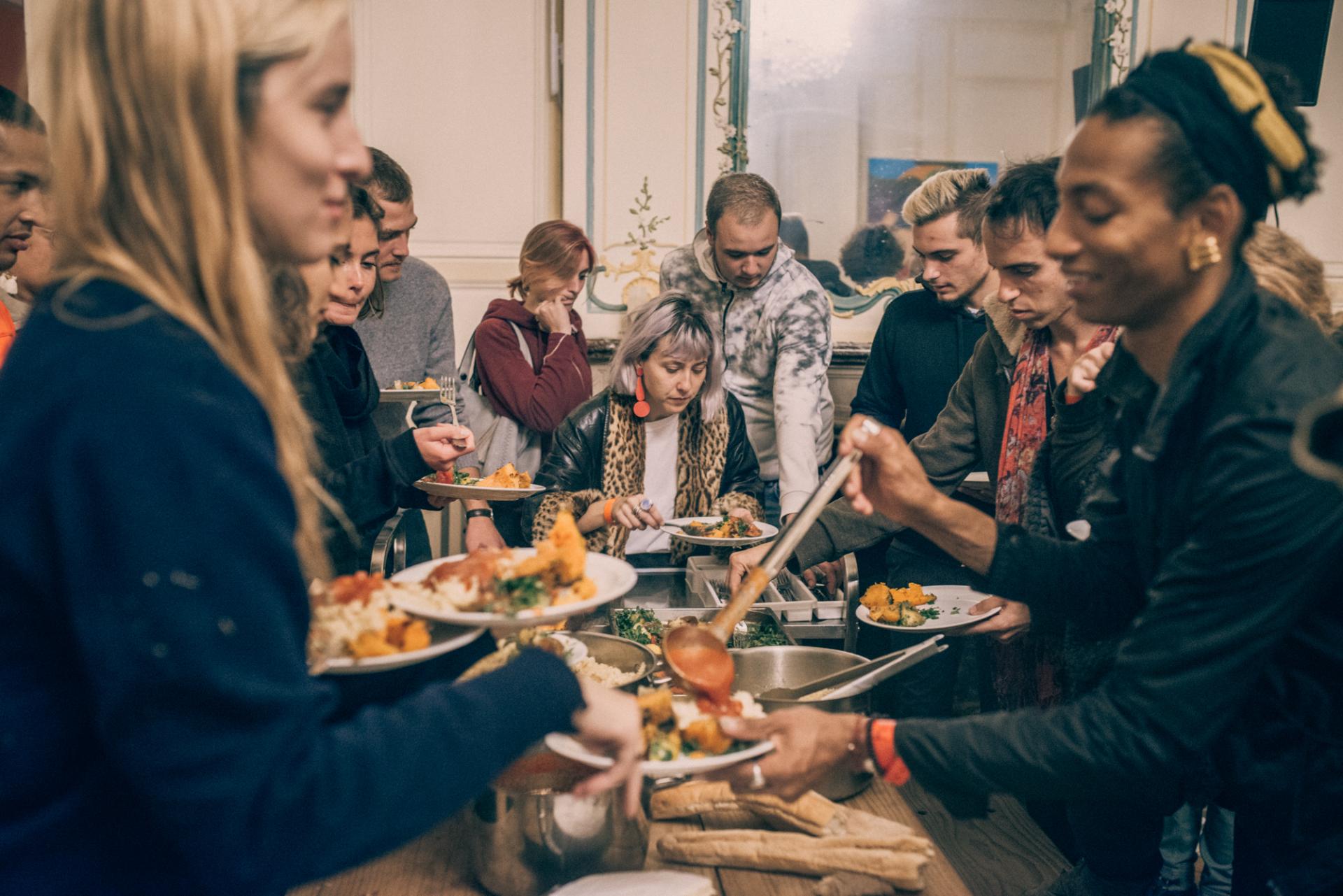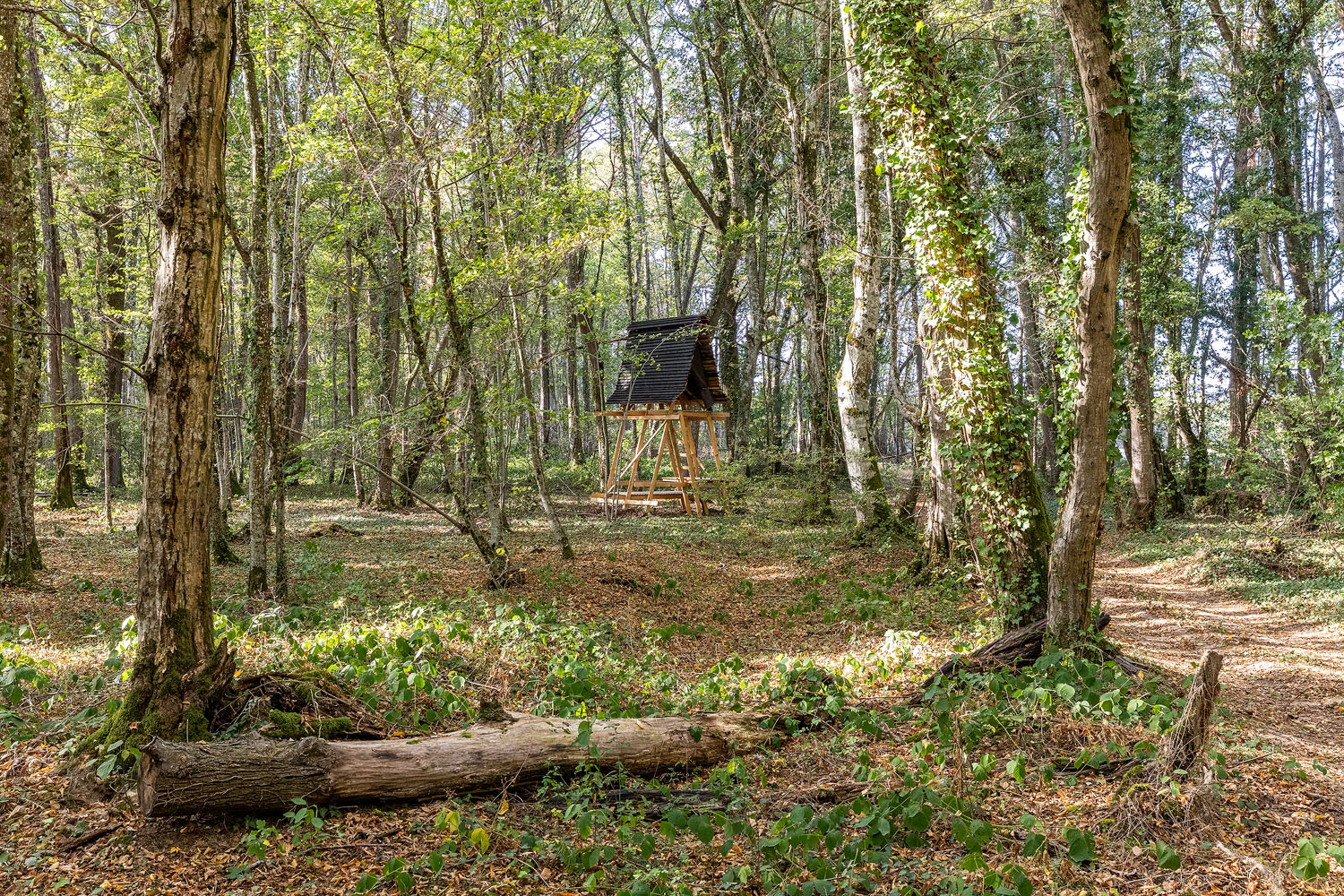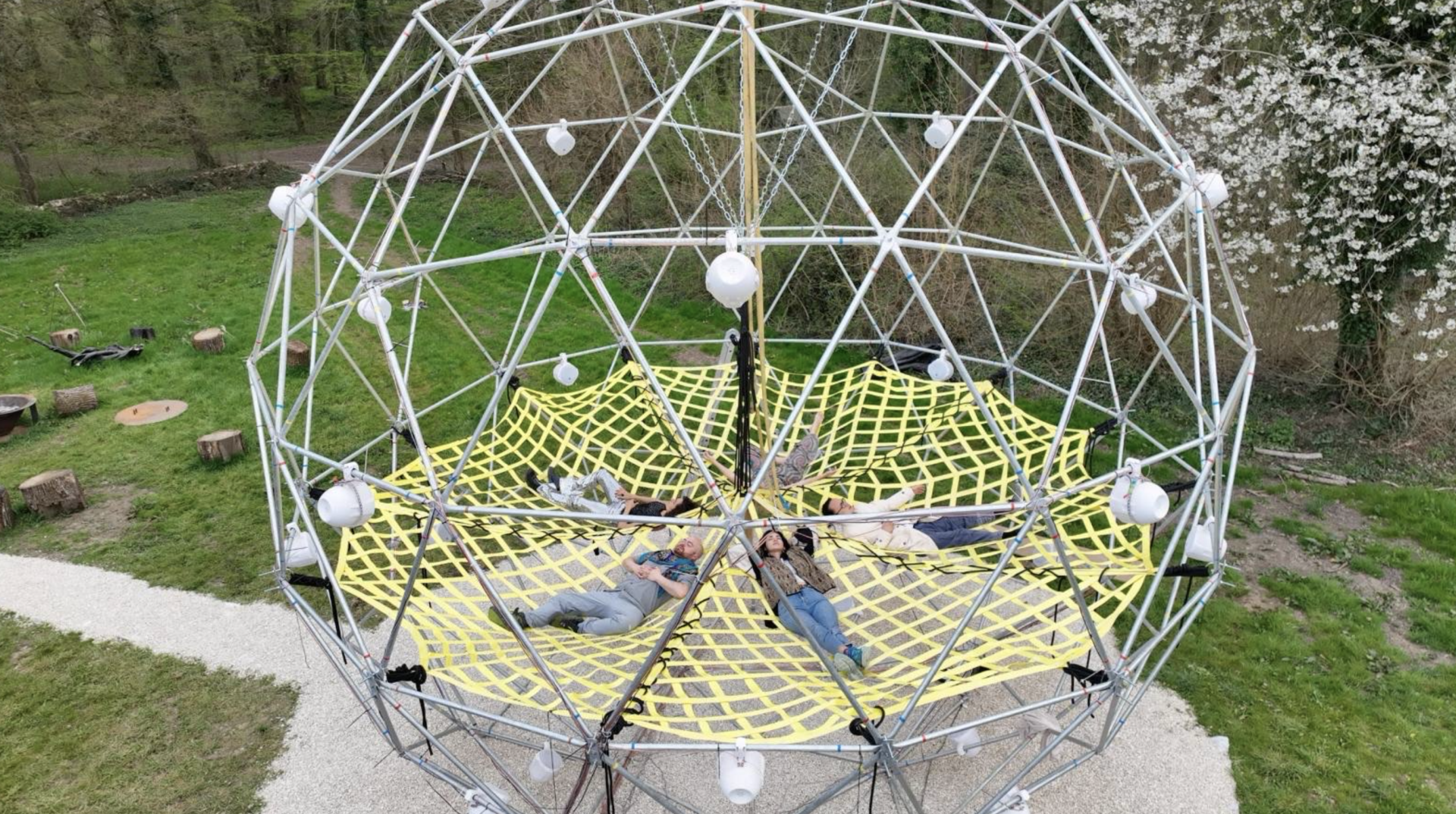Château du Feÿ
Basic information
Project Title
Château du Feÿ
Full project title
The Château of Possibilities : a Regenerative Engine of Belonging
Category
Regaining a sense of belonging
Project Description
Château du Feÿ is a pragmatic utopia in rural France, where people find a sense of belonging through a thriving community that shares one mission: to rethink our possible futures. In a polarized, isolating world, inside a 400 year-old chateau which lay empty for a decade, we created a sustainable and regenerative ecosystem that builds bridges: between local and global ideas, rural and cosmopolitan populations, between countless disciplines, and between the world of yesterday and that of tomorrow
Geographical Scope
Local
Project Region
Joigny Area in Bourgogne France, France
Urban or rural issues
It addresses urban-rural linkages
Physical or other transformations
It refers to a physical transformation of the built environment (hard investment)
EU Programme or fund
No
Description of the project
Summary
In 2017 at the age of 26, architect Jessica Flore Angel was living in San Francisco at The Embassy, a life-changing intentional community, that showed her the power of place-based projects in creating a sense of belonging. Back home in France, she saw the abandoned 400-year-old Château du Feÿ as a similar place of possibility. Supported by friends and family, she took on the entrepreneurial challenge of turning this historic site into a laboratory for sustainable futures, bridging between rural and urban populations, at the intersection of art, nature, heritage, technology and community.
Today at Feÿ, people find a sense of belonging and leverage the power of community to create knowledge and regenerative projects. For the past 7 years we have been developing a virtuous ecosystem made of 5 complementary structures:
1.FEŸTOPIA, a community of ~200 international artists, technologists, entrepreneurs, and researchers rethinking the world of tomorrow, which every winter turns the Chateau into a co-living space (Dec-Apr).
2. SAS. CH TEAU DU FEŸ, a profitable company that rents Feÿ in the summer (Mai-Nov) for events with aligned values.
3.FEŸ ARTS, non-profit in charge of our yearly multi-disciplinary arts festival that brings 1500 people for a unique weekend-long immersive experience, as well as artist residencies prior to the festival.
4.FRIENDS OF FEŸ, non-profit in charge of bridging between natural heritage and built heritage. It leads projects and workshops around permaculture/agroforestry, biodiversity preservation and old techniques of renovation.
5.CONVERGENCE DES POSSIBLES, a consortium with local nonprofits in charge of nurturing our local community to support projects around food, energy and technological resiliency.
We have prototyped a sustainable model, which is improving its land, its local economy, its community fabric, its people, its culture, its heritage and that has already catalyzed others to do the same.
Today at Feÿ, people find a sense of belonging and leverage the power of community to create knowledge and regenerative projects. For the past 7 years we have been developing a virtuous ecosystem made of 5 complementary structures:
1.FEŸTOPIA, a community of ~200 international artists, technologists, entrepreneurs, and researchers rethinking the world of tomorrow, which every winter turns the Chateau into a co-living space (Dec-Apr).
2. SAS. CH TEAU DU FEŸ, a profitable company that rents Feÿ in the summer (Mai-Nov) for events with aligned values.
3.FEŸ ARTS, non-profit in charge of our yearly multi-disciplinary arts festival that brings 1500 people for a unique weekend-long immersive experience, as well as artist residencies prior to the festival.
4.FRIENDS OF FEŸ, non-profit in charge of bridging between natural heritage and built heritage. It leads projects and workshops around permaculture/agroforestry, biodiversity preservation and old techniques of renovation.
5.CONVERGENCE DES POSSIBLES, a consortium with local nonprofits in charge of nurturing our local community to support projects around food, energy and technological resiliency.
We have prototyped a sustainable model, which is improving its land, its local economy, its community fabric, its people, its culture, its heritage and that has already catalyzed others to do the same.
Key objectives for sustainability
Sustainability is at the core of our project.
1. Preserving Soil Life and Fertility:
We have devoted time to preserving the fertility of the soil on our 100-acre property such as transforming a mowed grass area into a labyrinth with 2000 indigenous heat-resistant plants. We established a perma- vegetable garden sustained by rainwater collection. We have a strong zero-waste policy and we are now implementing a tree nursery to build living hedges in the region, supporting conventional farmers in transitioning to sustainable farming.
2. Building a Strong Local Community:
We believe a robust local community is the foundation for change and resilience. We mapped all local actors working towards a sustainable transition, created a 1000-member strong Facebook group, and organized more than 50 events focused on sustainability.
3. Cultivating an International Eco-Leaders Community:
Hosting important ecological gatherings like AlterEgo, Convention of Companies for Climate, Eco-Weaving and Rencontres Vivantes, has created a thriving international community of eco-leaders. This network provides a sense of belonging and support for each other in transitioning towards sustainable futures.
4. Promoting a New Ethos for Vendors, Collaborators, and Clients:
We've engaged our vendors, collaborators, and clients in a more sustainable lifestyle through events that advocate for, and educate about, the circular economy. Chateau du Feÿ serves as a transition space for many, fostering a shift in consciousness when it comes to ecology.
5. Renovating Heritage :
To reduce emissions, we have renovated Feÿ utilizing eco materials and slowly replacing the entire energy system. At Feÿ, heritage architects dialogue with the Agency for Ecological Transition. Rather than building new, our philosophy is rooted in the belief that the world should restore its heritage to align with modern expectations. We steadfastly uphold this stance by always restoring instead of buying new.
1. Preserving Soil Life and Fertility:
We have devoted time to preserving the fertility of the soil on our 100-acre property such as transforming a mowed grass area into a labyrinth with 2000 indigenous heat-resistant plants. We established a perma- vegetable garden sustained by rainwater collection. We have a strong zero-waste policy and we are now implementing a tree nursery to build living hedges in the region, supporting conventional farmers in transitioning to sustainable farming.
2. Building a Strong Local Community:
We believe a robust local community is the foundation for change and resilience. We mapped all local actors working towards a sustainable transition, created a 1000-member strong Facebook group, and organized more than 50 events focused on sustainability.
3. Cultivating an International Eco-Leaders Community:
Hosting important ecological gatherings like AlterEgo, Convention of Companies for Climate, Eco-Weaving and Rencontres Vivantes, has created a thriving international community of eco-leaders. This network provides a sense of belonging and support for each other in transitioning towards sustainable futures.
4. Promoting a New Ethos for Vendors, Collaborators, and Clients:
We've engaged our vendors, collaborators, and clients in a more sustainable lifestyle through events that advocate for, and educate about, the circular economy. Chateau du Feÿ serves as a transition space for many, fostering a shift in consciousness when it comes to ecology.
5. Renovating Heritage :
To reduce emissions, we have renovated Feÿ utilizing eco materials and slowly replacing the entire energy system. At Feÿ, heritage architects dialogue with the Agency for Ecological Transition. Rather than building new, our philosophy is rooted in the belief that the world should restore its heritage to align with modern expectations. We steadfastly uphold this stance by always restoring instead of buying new.
Key objectives for aesthetics and quality
Aesthetics play a fundamental role in this project. The Chateau was empty and for sale for 10 years and closed to the public, so the sheer act of revitalizing and maintaining this architectural wonder and allowing public access is already an activist gesture when it comes to preserving beauty.
1.Our project, spearheaded by an architect, revolves around a historic Chateau, blending elements of the old and new. Aesthetic and experiential excellence is attained through innovative approaches in designing and renovating built spaces, as well as the garden, in collaboration with the renowned landscape designer and 'punk gardener' Eric Lenoir.
2. Our commitment to beautiful sustainability extends to projects like aesthetically pleasing dry toilets, glamping tents, and compost areas. These may seem like curious details, but such initiatives not only promote environmental consciousness but also challenge preconceived notions about eco-friendly facilities. We believe that the allure of beauty is a compelling force that can inspire people to embrace a transition in their own lives.
3. The Arts Festival attracts 50 to 100 artists across various disciplines such as performance, gastronomy, contemporary arts, cinema, architecture, and music. Approximately 1500 individuals (30% Local, 50% Paris, 20% international) immerse themselves in the enchanted world, with many art installations persisting, particularly those created during our residencies. This is also a step toward decentralizing culture, countering its typical accumulation around cities.
4. In winter, the Chateau transforms into a Feytopia, a creative collaborative living space through a selective program. We gather individuals determined to enact positive change. Our creative community serves as a nexus connecting tech and eco entrepreneurs, researchers, designers, and architects. This collaboration not only yields thoughtful projects but also ensures their beautiful design and effective communication.
1.Our project, spearheaded by an architect, revolves around a historic Chateau, blending elements of the old and new. Aesthetic and experiential excellence is attained through innovative approaches in designing and renovating built spaces, as well as the garden, in collaboration with the renowned landscape designer and 'punk gardener' Eric Lenoir.
2. Our commitment to beautiful sustainability extends to projects like aesthetically pleasing dry toilets, glamping tents, and compost areas. These may seem like curious details, but such initiatives not only promote environmental consciousness but also challenge preconceived notions about eco-friendly facilities. We believe that the allure of beauty is a compelling force that can inspire people to embrace a transition in their own lives.
3. The Arts Festival attracts 50 to 100 artists across various disciplines such as performance, gastronomy, contemporary arts, cinema, architecture, and music. Approximately 1500 individuals (30% Local, 50% Paris, 20% international) immerse themselves in the enchanted world, with many art installations persisting, particularly those created during our residencies. This is also a step toward decentralizing culture, countering its typical accumulation around cities.
4. In winter, the Chateau transforms into a Feytopia, a creative collaborative living space through a selective program. We gather individuals determined to enact positive change. Our creative community serves as a nexus connecting tech and eco entrepreneurs, researchers, designers, and architects. This collaboration not only yields thoughtful projects but also ensures their beautiful design and effective communication.
Key objectives for inclusion
Our primary objective in all we do is to bridge between worlds, people, places and ideas to foster a sense of belonging and collaboration.
1.France's financial and cultural capital is highly centralized in Paris. Feÿ adopts a Robinhood approach to decentralize wealth. Wealthier individuals contribute to Feÿ by hosting events enabling us to welcome other audiences for free. Over the past 7 years, this model has allowed us to organize cultural and eco events in partnership with local communities, providing free access to diverse audiences.
2.Collaborating with local neighborhoods facing poverty, we've hosted workshops for children, teenagers, and young adults facing various struggles, often stemming from immigrant backgrounds. These programs (En Revanche, ENCIT…) have yielded transformative experiences for a few 100 individuals so far.
3.Hosting popular free local community events, such as the Easter Egg hunt and Heritage days, with diverse audiences exceeding 500 people, reinforces our commitment to breaking down cultural barriers associated with historic spaces like chateaux. Democratizing access to such spaces is integral to our mission.
4.Our colliving programs prioritize diversity not only in terms of gender, sexual orientation, religion, or ethnicity but also financial and disciplinary backgrounds. In keeping with an intersectional approach, 20% of participants always have the opportunity to stay for free.
5.The Feÿ Arts Festival draws 30% of participants from the local area, 50% from cities, and 20% internationally. The festival is free for the village, with a reduced price for the broader local area, ensuring accessibility to various demographics.
6.Most projects are administered through collective governance processes, incorporating diverse viewpoints on affordability and inclusiveness. This approach underscores our commitment to creating an inclusive environment, making our project exemplary in promoting diversity and belonging.
1.France's financial and cultural capital is highly centralized in Paris. Feÿ adopts a Robinhood approach to decentralize wealth. Wealthier individuals contribute to Feÿ by hosting events enabling us to welcome other audiences for free. Over the past 7 years, this model has allowed us to organize cultural and eco events in partnership with local communities, providing free access to diverse audiences.
2.Collaborating with local neighborhoods facing poverty, we've hosted workshops for children, teenagers, and young adults facing various struggles, often stemming from immigrant backgrounds. These programs (En Revanche, ENCIT…) have yielded transformative experiences for a few 100 individuals so far.
3.Hosting popular free local community events, such as the Easter Egg hunt and Heritage days, with diverse audiences exceeding 500 people, reinforces our commitment to breaking down cultural barriers associated with historic spaces like chateaux. Democratizing access to such spaces is integral to our mission.
4.Our colliving programs prioritize diversity not only in terms of gender, sexual orientation, religion, or ethnicity but also financial and disciplinary backgrounds. In keeping with an intersectional approach, 20% of participants always have the opportunity to stay for free.
5.The Feÿ Arts Festival draws 30% of participants from the local area, 50% from cities, and 20% internationally. The festival is free for the village, with a reduced price for the broader local area, ensuring accessibility to various demographics.
6.Most projects are administered through collective governance processes, incorporating diverse viewpoints on affordability and inclusiveness. This approach underscores our commitment to creating an inclusive environment, making our project exemplary in promoting diversity and belonging.
Results in relation to category
We are confident that one thing we have truly achieved over the years is giving people a sense of belonging. Each branch of Feÿ- has been a vehicle for individuals to feel part of a larger whole. People take pride in working for something bigger, gaining a community. Some connect with local communities, others with the festival, or collaborative living. Regardless of the project, Feÿ is a nurturing space that gathers—a nursery for everyone from immense talents and temporarily lost souls. Thanks to the multifaceted aspect of the project, everyone finds a role or place, profoundly contributing to well-being and fulfillment. We are proud to say that Feÿ has been life-changing for many, as they report feeling seen, heard, included and supported - sometimes for the first time ever.
We believe it is a fundamental human need, influencing social, emotional, and psychological aspects of an individual's life—at the basis of everything. Creating this sense of belonging empowers people, turning what was thought impossible (restoring a chateau, launching the sonic sphere, making Joigny the new Berlin…) into a reality. We believe that this emotional resilience through community and belonging is at the core of building sustainable futures.
We believe it is a fundamental human need, influencing social, emotional, and psychological aspects of an individual's life—at the basis of everything. Creating this sense of belonging empowers people, turning what was thought impossible (restoring a chateau, launching the sonic sphere, making Joigny the new Berlin…) into a reality. We believe that this emotional resilience through community and belonging is at the core of building sustainable futures.
How Citizens benefit
Feÿ is by definition a collaborative project.
1. LOCAL CITIZENS: Over the past 7 years, Joigny has undergone a remarkable transformation. This exemplifies that the revitalization of a rural area is achievable with a few motivated individuals around a table : The mayor, Laure Noulhat (Eco-journalist), two friends and Feÿ. The positive changes include the opening of numerous shops, the flourishing of various projects such as a conservatory, recyclery, collectively-owned solar panels, a tiny house manufacturing initiative, a solidarity cafe etc.
2.GLOBAL INFLUENCE: Numerous influential projects and theories have originated at Château du Feÿ. From the innovative concept of "Extitutions" developed by Feÿtopia co-founder and blockchain scholar Primavera De Filippi to the "Sonic Sphere" recently showcased to international acclaim at The Shed in New York by memory grandmaster Ed Cooke. Feÿ sees itself as a contemporary iteration of the Bauhaus school or its American descendant, Black Mountain College.
3.ECONOMIC IMPACT: We employ on average 15 full-time employees from the local area, as we are committed to a regenerative local economy and value their input into making and shaping Fey into the success it is. Events held at Feÿ inject approximately 500,000 euros into the local economy annually, benefiting various businesses such as taxis, hotels, florists, producers, caterers, and craftsmen. In addition, over 1 million euros have been paid in renovations to local construction companies.
4.FOSTERING COMMUNITY: Over the past decade, 40,000 people have entered the chateau, acting as a transformative space where individuals arrive and leave changed, falling in love and initiating projects. Feÿ serves as a catalyst, accelerating a sense of belonging.
5.RESTORING LAND: By collaborating closely with climate experts such as Eric Lenoir, Maxime de Rostolan and Laure Noualhat, we have created an exemplary spatial laboratory to test and observe innovative eco-practices.
1. LOCAL CITIZENS: Over the past 7 years, Joigny has undergone a remarkable transformation. This exemplifies that the revitalization of a rural area is achievable with a few motivated individuals around a table : The mayor, Laure Noulhat (Eco-journalist), two friends and Feÿ. The positive changes include the opening of numerous shops, the flourishing of various projects such as a conservatory, recyclery, collectively-owned solar panels, a tiny house manufacturing initiative, a solidarity cafe etc.
2.GLOBAL INFLUENCE: Numerous influential projects and theories have originated at Château du Feÿ. From the innovative concept of "Extitutions" developed by Feÿtopia co-founder and blockchain scholar Primavera De Filippi to the "Sonic Sphere" recently showcased to international acclaim at The Shed in New York by memory grandmaster Ed Cooke. Feÿ sees itself as a contemporary iteration of the Bauhaus school or its American descendant, Black Mountain College.
3.ECONOMIC IMPACT: We employ on average 15 full-time employees from the local area, as we are committed to a regenerative local economy and value their input into making and shaping Fey into the success it is. Events held at Feÿ inject approximately 500,000 euros into the local economy annually, benefiting various businesses such as taxis, hotels, florists, producers, caterers, and craftsmen. In addition, over 1 million euros have been paid in renovations to local construction companies.
4.FOSTERING COMMUNITY: Over the past decade, 40,000 people have entered the chateau, acting as a transformative space where individuals arrive and leave changed, falling in love and initiating projects. Feÿ serves as a catalyst, accelerating a sense of belonging.
5.RESTORING LAND: By collaborating closely with climate experts such as Eric Lenoir, Maxime de Rostolan and Laure Noualhat, we have created an exemplary spatial laboratory to test and observe innovative eco-practices.
Physical or other transformations
It refers to a physical transformation of the built environment (hard investment)
Innovative character
The innovative character of the Chateau du Feÿ project stands out prominently when compared to mainstream actors in the field who fail after 3 years because of a lack of resources (most chateaux) or human conflicts (most eco-communities). Several key aspects contribute to its distinctive nature:
Chateau Setting:The utilization of a historic Chateau as the focal point of the project sets it apart. While many projects may focus on new constructions, Feÿ's innovative approach involves the restoration and repurposing of an existing heritage site. This not only contributes to the preservation of cultural heritage but also adds a unique charm and historical context to the project.
Rural & Urban Integration:Feÿ innovatively bridges the gap between rural and urban dynamics. Situated in a rural setting, the project brings together the best of both worlds and unexpected encounters.
Paradoxes & Nuance:The project thrives on embracing paradoxes and nuances. Instead of adhering to a one-dimensional approach, Feÿ recognizes and celebrates the coexistence of seemingly contradictory elements. This nuanced perspective adds depth and complexity, setting it apart from more conventional, linear projects.
Matriarchy:Feÿ is a female led project and is inspiring for many young females.
Care: By incorporating a carefully curated experience and an emphasis on community and creative collaborations, it ensures that each stay offers a level of engagement and care that goes beyond the standard approach in similar projects. We put a strong emphasis on care at every level.
This holistic approach sets it apart from mainstream actions in the field, making it a trailblazer in redefining the boundaries of cultural, historical, and community-oriented projects.
Chateau Setting:The utilization of a historic Chateau as the focal point of the project sets it apart. While many projects may focus on new constructions, Feÿ's innovative approach involves the restoration and repurposing of an existing heritage site. This not only contributes to the preservation of cultural heritage but also adds a unique charm and historical context to the project.
Rural & Urban Integration:Feÿ innovatively bridges the gap between rural and urban dynamics. Situated in a rural setting, the project brings together the best of both worlds and unexpected encounters.
Paradoxes & Nuance:The project thrives on embracing paradoxes and nuances. Instead of adhering to a one-dimensional approach, Feÿ recognizes and celebrates the coexistence of seemingly contradictory elements. This nuanced perspective adds depth and complexity, setting it apart from more conventional, linear projects.
Matriarchy:Feÿ is a female led project and is inspiring for many young females.
Care: By incorporating a carefully curated experience and an emphasis on community and creative collaborations, it ensures that each stay offers a level of engagement and care that goes beyond the standard approach in similar projects. We put a strong emphasis on care at every level.
This holistic approach sets it apart from mainstream actions in the field, making it a trailblazer in redefining the boundaries of cultural, historical, and community-oriented projects.
Disciplines/knowledge reflected
Feÿ embodies a microcosm, requiring collaboration across diverse disciplines for its design and implementation. The synergy among representatives from various fields has been essential to the project's design and success.
1.Finance & Real Estate: In the initial stages, these professionals played a pivotal role in formulating a robust business plan and navigating the complexities of mortgage structures.
2.Heritage: Given the historic monument status, collaboration with heritage architects, construction workers, and non-profits was imperative to address intricacies specific to heritage sites.
3.Landscape Design & Architecture: Engagement with professionals in this field was essential, whether for the rejuvenation of the garden or for the interior design. The collaboration with gardeners and sustainability-focused landscape designers contributed to the chateau's overall aesthetic and ecological vision.
4.Sustainability: To address the broad spectrum of sustainability, from forest preservation to permaculture, experts in the field were sought.
5.Management & Mediation: to nurture and care for the numerous stakeholders involved in the project : 10-18 employees, the global and local community, 100 Feÿ Arts volunteers.
6.Events Production: to learn how to run flawless events and identify the right vendors and collaborators. In addition we've had to learn from hospitality experts to run the 28 bedrooms and 30 glamping tents.
7.Governance & Legal: The exploration of collaborative governance models and the potential establishment of a foundation for the project longevity required expertise.
The added value of this multidisciplinary collaboration is evident in the holistic and sustainable development of Feÿ. It combines historical preservation, ecological consciousness, community well-being, and technological innovation, creating a harmonious blend of diverse expertise for the benefit of both the project and the broader community.
1.Finance & Real Estate: In the initial stages, these professionals played a pivotal role in formulating a robust business plan and navigating the complexities of mortgage structures.
2.Heritage: Given the historic monument status, collaboration with heritage architects, construction workers, and non-profits was imperative to address intricacies specific to heritage sites.
3.Landscape Design & Architecture: Engagement with professionals in this field was essential, whether for the rejuvenation of the garden or for the interior design. The collaboration with gardeners and sustainability-focused landscape designers contributed to the chateau's overall aesthetic and ecological vision.
4.Sustainability: To address the broad spectrum of sustainability, from forest preservation to permaculture, experts in the field were sought.
5.Management & Mediation: to nurture and care for the numerous stakeholders involved in the project : 10-18 employees, the global and local community, 100 Feÿ Arts volunteers.
6.Events Production: to learn how to run flawless events and identify the right vendors and collaborators. In addition we've had to learn from hospitality experts to run the 28 bedrooms and 30 glamping tents.
7.Governance & Legal: The exploration of collaborative governance models and the potential establishment of a foundation for the project longevity required expertise.
The added value of this multidisciplinary collaboration is evident in the holistic and sustainable development of Feÿ. It combines historical preservation, ecological consciousness, community well-being, and technological innovation, creating a harmonious blend of diverse expertise for the benefit of both the project and the broader community.
Methodology used
The methodology employed in the Chateau du Feÿ project is grounded in an ecosystemic approach, transcending the boundaries of a conventional non-profit or business. The success of the project lies in the interconnected synergy between various entities, fostering a robust and holistic impact that extends beyond singular sectors.
1. Holistic Rural Regeneration: The project aims to be an exemplar of rural regeneration by adopting a holistic perspective. Instead of narrowly focusing on one area, the methodology revolves around enhancing the natural, social, cultural, and financial capital of both the Chateau and its surroundings.
2. Synergy Between Entities: Feÿ recognizes that impactful projects are not standalone endeavors. The methodology involves creating symbiotic relationships between different stakeholders, whether they be local communities, heritage preservation organizations, or global thinkers..
3. Adaptive and Resilient Strategies:
Understanding the dynamic nature of its environment, the project adopts adaptive and resilient strategies. Whether in response to economic shifts, societal changes, or environmental crisis, the methodology is designed to evolve and respond effectively to the ever-changing landscape.
In essence, the Chateau du Feÿ project's methodology exemplifies a dynamic, interconnected, and adaptive approach that positions it as a model for rural regeneration, showcasing how a comprehensive and holistic strategy can lead to enduring positive impacts to rethink the world of tomorrow
1. Holistic Rural Regeneration: The project aims to be an exemplar of rural regeneration by adopting a holistic perspective. Instead of narrowly focusing on one area, the methodology revolves around enhancing the natural, social, cultural, and financial capital of both the Chateau and its surroundings.
2. Synergy Between Entities: Feÿ recognizes that impactful projects are not standalone endeavors. The methodology involves creating symbiotic relationships between different stakeholders, whether they be local communities, heritage preservation organizations, or global thinkers..
3. Adaptive and Resilient Strategies:
Understanding the dynamic nature of its environment, the project adopts adaptive and resilient strategies. Whether in response to economic shifts, societal changes, or environmental crisis, the methodology is designed to evolve and respond effectively to the ever-changing landscape.
In essence, the Chateau du Feÿ project's methodology exemplifies a dynamic, interconnected, and adaptive approach that positions it as a model for rural regeneration, showcasing how a comprehensive and holistic strategy can lead to enduring positive impacts to rethink the world of tomorrow
How stakeholders are engaged
This project could not have flourished without the crucial support of key stakeholders at various levels:
1.Local Level: On the public side, our success has been greatly facilitated by the exceptional support of local mayors. Bruno Jan from the village of Villecien and Nicolas Soret, the mayor of the nearby town Joigny, have played pivotal roles. They have not only connected us with key individuals upon our arrival but have also been instrumental in supporting building permits, voluntary contributions and provision of materials for our festival.
2.Departmental Level: Nicolas Soret's assistance has extended to the departmental level, where he has facilitated small grants primarily aimed at fostering the arts through our residency programs and festivals.
3.Regional Level: We have received substantial support for renovation projects from the region. Notably, a 30% grant from la DRAC-BFC was awarded to restore our dovecote, amounting to 100K euros. The regional funding has also extended funding our rainwater collection project.
4.State Level : our local consortium got a state grant of 150K euro which led to the hiring of two part-time employees which has led to many ground breaking initiatives like our collaboration with the priority neighborhood.
5.Private Sector Engagement: Our project has been fortunate to secure the generous help of patrons, sponsors, and prestigious awards. Jessica's recognition as the recipient of the French prize for the Best Young Heritage Entrepreneur and its European equivalent, administered by the nonprofit European Historic Houses, has provided both financial support and increased visibility. Moreover, our project has been honored with the Heritage Lottery award, accompanied by a grant of 93K euros, representing the department at a broader scale. These grants and awards not only signify the recognition of our efforts but also provide essential financial resources, enabling the realization of key aspects of our project.
1.Local Level: On the public side, our success has been greatly facilitated by the exceptional support of local mayors. Bruno Jan from the village of Villecien and Nicolas Soret, the mayor of the nearby town Joigny, have played pivotal roles. They have not only connected us with key individuals upon our arrival but have also been instrumental in supporting building permits, voluntary contributions and provision of materials for our festival.
2.Departmental Level: Nicolas Soret's assistance has extended to the departmental level, where he has facilitated small grants primarily aimed at fostering the arts through our residency programs and festivals.
3.Regional Level: We have received substantial support for renovation projects from the region. Notably, a 30% grant from la DRAC-BFC was awarded to restore our dovecote, amounting to 100K euros. The regional funding has also extended funding our rainwater collection project.
4.State Level : our local consortium got a state grant of 150K euro which led to the hiring of two part-time employees which has led to many ground breaking initiatives like our collaboration with the priority neighborhood.
5.Private Sector Engagement: Our project has been fortunate to secure the generous help of patrons, sponsors, and prestigious awards. Jessica's recognition as the recipient of the French prize for the Best Young Heritage Entrepreneur and its European equivalent, administered by the nonprofit European Historic Houses, has provided both financial support and increased visibility. Moreover, our project has been honored with the Heritage Lottery award, accompanied by a grant of 93K euros, representing the department at a broader scale. These grants and awards not only signify the recognition of our efforts but also provide essential financial resources, enabling the realization of key aspects of our project.
Global challenges
The Chateau du Feÿ project addresses several global challenges by providing innovative local solutions, demonstrating the potential for grassroots initiatives to contribute to broader solutions. Key challenges addressed include:
1. Many rural areas globally face economic decline, population loss, and cultural erosion leading to the rise of conservative policies and anti-EU sentiment. Feÿ revitalizes the poor rural area of Joigny by fostering collaboration among local actors, creating economic opportunities and attracting new people to the area. A replicable example of decentralization.
2.Historic sites worldwide struggle with financial viability, modern cultural relevance and preservation.Feÿ demonstrates how historic chateaux can be financially sustainable through adaptive reuse, providing a model for the preservation and sustainable use of historical spaces globally.
3. Loneliness and isolation has been declared a pandemic by the US surgeon general, with impacts as bad as smoking. Feÿ focuses on community building, holding space for diverse individuals to come together. The project's rituals and methodologies for bringing togetherness serves as local solutions to address global challenges related to social cohesion.
4. The climate crisis and challenge of the sustainable transition. Feÿ implements and educates on sustainable practices and fosters a resilient territory in terms of food and energy supply, demonstrating how small-scale initiatives can serve as examples for other towns in transition.
5. Rethinking our institutions and finding solutions to face the world's crisis. Feÿ is a magnet for many world experts and entrepreneurs in a staggering range of disciplines which has led to global groundbreaking academic advances, projects, communities, companies and nonprofits being created and flourishing at Fey. We accelerate collective intelligence around important topics such as the climate crisis, governance, AI and politics.
1. Many rural areas globally face economic decline, population loss, and cultural erosion leading to the rise of conservative policies and anti-EU sentiment. Feÿ revitalizes the poor rural area of Joigny by fostering collaboration among local actors, creating economic opportunities and attracting new people to the area. A replicable example of decentralization.
2.Historic sites worldwide struggle with financial viability, modern cultural relevance and preservation.Feÿ demonstrates how historic chateaux can be financially sustainable through adaptive reuse, providing a model for the preservation and sustainable use of historical spaces globally.
3. Loneliness and isolation has been declared a pandemic by the US surgeon general, with impacts as bad as smoking. Feÿ focuses on community building, holding space for diverse individuals to come together. The project's rituals and methodologies for bringing togetherness serves as local solutions to address global challenges related to social cohesion.
4. The climate crisis and challenge of the sustainable transition. Feÿ implements and educates on sustainable practices and fosters a resilient territory in terms of food and energy supply, demonstrating how small-scale initiatives can serve as examples for other towns in transition.
5. Rethinking our institutions and finding solutions to face the world's crisis. Feÿ is a magnet for many world experts and entrepreneurs in a staggering range of disciplines which has led to global groundbreaking academic advances, projects, communities, companies and nonprofits being created and flourishing at Fey. We accelerate collective intelligence around important topics such as the climate crisis, governance, AI and politics.
Learning transferred to other parties
Feÿ has accumulated extensive knowledge and world class best practices that can be replicated or transferred to various places, groups of beneficiaries, and contexts. We have already empowered individuals to initiate their versions of Feÿ like Chateau de la Haute Borde, Bonne Vie, La Boule d'Or or Selgars. Many people visit to get inspired around the following topics :
1.Financial Viability of Historic Spaces: With 45,000 chateaux in France facing financial struggles, Feÿ offers a beacon of hope by demonstrating the financial viability of these historic spaces. The insights into how to make a chateau financially sustainable can be shared with other chateau owners or those interested in preserving historical sites worldwide.
2.Community Building: Best practices in conflict resolution and rituals employed for fostering healthy communities are valuable lessons at Feÿ. These can serve as a blueprint for other initiatives aiming to build strong, cooperative communities with effective conflict resolution strategies.
3. Rural Revitalization: The experience of revitalizing a poor rural area through collaboration among local actors provides a roadmap for others facing similar challenges. The knowledge gained in navigating partnerships, engaging the community, and fostering cooperation can be transferred to regions seeking sustainable rural development.
4.Sustainable Venue Management:The eco-practices implemented at Feÿ, including composting, water-efficient landscaping, energy management, and support for local products and vendors, serve as a model for venues who aim to reduce their environmental impact.
5.The festival giving visibility to young artists who then get showcased in top institutions (MoMa, Palais de Tokyo, Centre Pompidou) with 30% local community participation, showcases an effective model for involving the community in cultural events. This format could be replicated in many rural areas to decentralize the arts and launch young talents.
1.Financial Viability of Historic Spaces: With 45,000 chateaux in France facing financial struggles, Feÿ offers a beacon of hope by demonstrating the financial viability of these historic spaces. The insights into how to make a chateau financially sustainable can be shared with other chateau owners or those interested in preserving historical sites worldwide.
2.Community Building: Best practices in conflict resolution and rituals employed for fostering healthy communities are valuable lessons at Feÿ. These can serve as a blueprint for other initiatives aiming to build strong, cooperative communities with effective conflict resolution strategies.
3. Rural Revitalization: The experience of revitalizing a poor rural area through collaboration among local actors provides a roadmap for others facing similar challenges. The knowledge gained in navigating partnerships, engaging the community, and fostering cooperation can be transferred to regions seeking sustainable rural development.
4.Sustainable Venue Management:The eco-practices implemented at Feÿ, including composting, water-efficient landscaping, energy management, and support for local products and vendors, serve as a model for venues who aim to reduce their environmental impact.
5.The festival giving visibility to young artists who then get showcased in top institutions (MoMa, Palais de Tokyo, Centre Pompidou) with 30% local community participation, showcases an effective model for involving the community in cultural events. This format could be replicated in many rural areas to decentralize the arts and launch young talents.
Keywords
Community
Creativity
Biodiversity
Heritage
Bridging worlds

